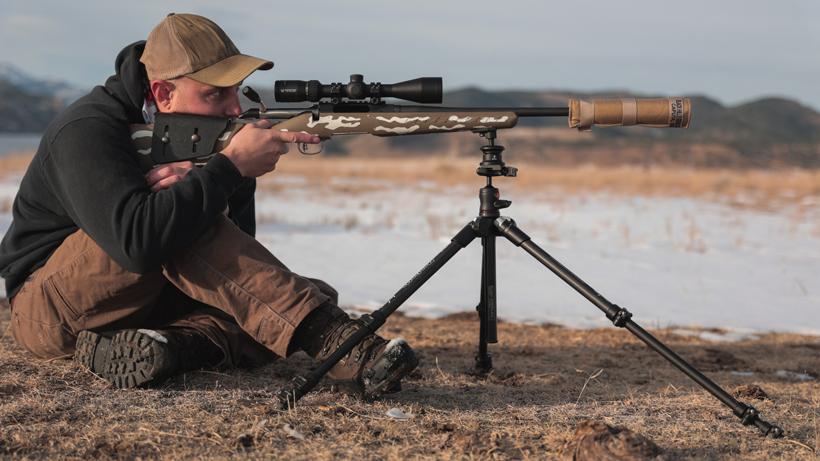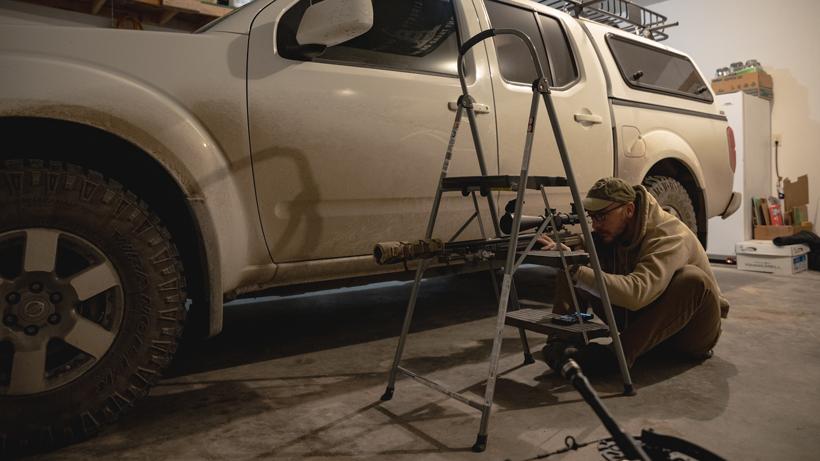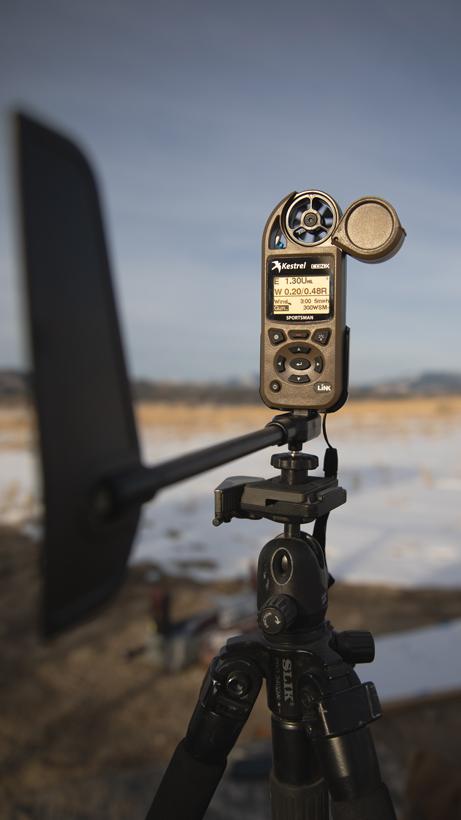




Photo credit: Anthony Wright


An essential piece of gear for practice sessions and hunts, the Kestrel 5700 Ballistics Weather Meter with LiNK.

For some states and people, spring bear hunts are the first big game season of the year. In Montana, winters can come early and may not recede until what sometimes seems like early summer. These long winters can make it hard to keep up on tangible skills like shooting or fitness.
There is a part in all of us (or maybe it’s just me) that will bite off more than we can chew upon the arrival of our first bear hunt: covering steep terrain, misjudging distances, unfamiliar shots, etc. So being prepared prior to the hunt will help mitigate any hurdles when trying to find some bears.
Photo credit: Anthony Wright
If you are familiar with some of my past articles, then you know I am a big fan of being in shape and, believe me, you don’t need a gym to do that. Many workouts can be quick (20 minutes) and at home. Check out these four workouts inspired by the backcountry. Bears live in some of the roughest country in the West. They are amazing animals. For us humans, though, who chose to seek these post-hibernation cave dwellers, we must go where the bears live. I don’t know about you, but I don’t have a honey hole in flat(ish) country for bears, which inherently requires me to cover miles in tough terrain. Bears can be found in avalanche chutes, dark timber, and steep sunny hillsides with green vegetation. However, sometimes getting to those areas requires extra effort.
Finding a bear is one thing; physically being able to close the distance is another. Use the winter months to keep yourself physically ready for the arrival of spring bear. No matter what kind of workout you choose to do, make sure you are incorporating hiking with a pack on to get those muscles ready for the big moment. Easy at-home exercises include weighted pack step-ups, forward and/or reverse lunges, burpees, air squats, push-ups, sit-ups, etc. In-home workouts do not need to be complicated to be effective.
This training tip is geared more toward rifle hunts, but some of the principles can also be transferred to archery as well. Based on my experiences, the shots on bears can be more advanced in comparison to range shooting. Hunting shots are never perfect due to uneven terrain, inclines/declines, wind, etc. Not everything must be done with live rounds. An affordable solution to getting trigger time is dry firing (yes, it’s okay to do on centerfire rifles).
In the comfort of your house or garage, you can take your pack, couch, barstool, ladder, shooting sticks or whatever you can find to add different variables to a prone or seated shooting position. Tape a small target on the wall to give you a reference point for executing the shot (settling the crosshairs, breathing, trigger pull, follow through and reloading). After a few slow iterations, begin to increase set-up speed to replicate getting ready under stress. Utilize the indoor time to become familiar with manipulating your bipod or reloading while staying on target while behind the gun in odd positions. You will figure out where you are lacking and can focus on that individual element.
An essential piece of gear for practice sessions and hunts, the Kestrel 5700 Ballistics Weather Meter with LiNK.
The best competitive shooters perform dry firing training year-round to build muscle memory and build confidence in their abilities, so we, as hunters, should follow suit. If you get a nice break in the winter weather, head outside and practice getting rounds through the barrel while keeping the muscle memory principles intact. Utilizing electronics, such as a Kestrel, can be a great tool for extending your range.
In the winter, one thing I do a lot of is e-scouting with 3D maps, which fuels my fire for spring bear while trying to fight off cabin fever pent up in the house. E-scouting is an integral part of most of our hunting plans whether they be in-state or out-of-state. While it may be nice to hike in, set up camp and spend four days in an area, what do you do when the road is impassable? What if there are already three trucks there? What if you’re not seeing game or sign? These types of variables cannot always be avoided. When I am planning to hunt an area, I try to have Plan A through Plan C or D. This enables me to have multiple options when I hit the road so I’m not wasting time being reactive to an unforeseen variable. Instead, I am being proactive. Figure out plans that incorporate different altitudes if snow is an issue. Determine locations that are off trail or less “appealing.” Try keeping Plans B through D relatively close to Plan A so you can spend more time glassing instead of in the truck.
For me, it really doesn’t seem like there is an offseason. I am always busy planning, testing gear, e-scouting, or training in some facet. The winter can be a good opportunity to stay sharp with tangible skills like fitness and shooting in the warmth of your home. Taking a little time on the weekends or weekdays even with a busy schedule can make a difference over time for when the seasons roll around.
As always, stay safe and hunt hard!